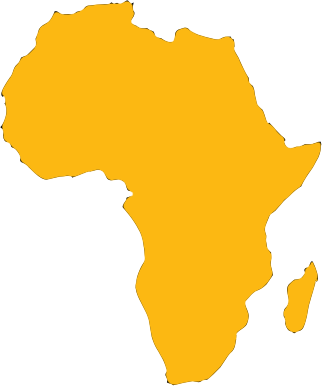Does South Africa really face its own Arab Spring?
By Dr Garth L le Pere- Visiting Professor , University of Pretoria
Former President Thabo Mbeki delivered an impassioned speech on 22 July 2022 at the memorial gathering of Jessie Duarte, the late ANC Deputy Secretary General. He sounded several dour warnings about the apocalyptic imagery gripping of the country and the extent to which the ANC as the ruling party has become integrally implicated as authors of the country’s current malaise.
However, what got media attention and provoked feverish debate was the former President’s reference to the Arab Spring. In his view, South Africa stands on the cusp of having its own Arab Spring if the enduring pathologies of poverty, unemployment, inequality, lawlessness, and corruption are not addressed as a matter of great national urgency.
In a paralysed governance and policy context, according to the former President, the government of President Cyril Ramaphosa does not have a plan of what needs to be done to get the country out of its current state of decline and decay, while the ANC has persistently failed in the cathartic and cleansing exercise of “renewing” itself.
He made further reference to the 26-year-old street vendor in Tunisia, Mohamed Bouazizi, who had endured ongoing police harassment and brutality and in a fit of despair through self-immolation in December 2010, provided the spark for Tunisia’s “Jasmine Revolution” and the ensuing protests and street demonstrations that swept across the country.
Not only did the unrest compel the Tunisian President, Zine al-Abidine Ali, to relinquish his post before fleeing the country in January 2011, but anti-regime popular protests, characterised by growing alienation, disenchantment, and anger, rapidly spread to other countries across the Middle East and North African region (MENA), including Egypt, Yemen, Bahrain, Libya, and Syria while pro-democracy protests in Algeria, Jordan, Morocco, and Oman forced ruling regimes there to offer various if only token concessions, lest the spectre of what occurred in Tunisia become a source of violent polarisation in their own countries.
In any event, the nub of the former President’s contention is that the same grievances that sparked the Arab Spring are brewing under the surface in South Africa and will one day explode. This begs the question of the correctness of his assertion, given South Africa’s current context and conjuncture.
A caveat is important here since these reflections were made at a memorial event to honour the legacy of his comrade and was not at an academic gathering. Hence, Mbeki could be forgiven for not further deconstructing the essential elements of what drove the Arab Spring across such a frustrated social milieu and volatile political geography.
However, he can also be accused of crude reductionism insofar as his parsimonious reference to the Arab Spring is rather facile, does not do justice to the complex phenomena that underpinned the Arab Spring, and therefore, must be subjected to critical scrutiny.
Conditions animating the Arab Spring
Unlike South Africa and at the outset, it is important to note that the Arab Spring occurred under specific historical circumstances, as well as within certain institutional forms, regime types, and matrices of power that had failed to register any formal transitions to democracy and political pluralism.
In this regard, in 2011 the US-based watchdog, Freedom House designated only Arab four countries as partly free; and the remaining thirteen as not free. In addition, as far as regime types are concerned, Arab countries have a mix of hybrid regimes which are personalist or single-party plebiscites; dynastic monarchies where power is distributed among ruling families; and praetorian governments which are single-party and military and intelligence dominated, owing their lineages to coups or anti-colonial struggles.
However, the upheavals that accompanied the Arab Spring did provoke wide media and academic debate about what they possibly portended for democratisation, institutional overhaul, and most crucially, more open, responsive, and accountable forms of governance.
That said, the waves of protests and social upheavals across the broader MENA region, that drew their impulse from and were emboldened by the Tunisian “Jasmine Revolution” experience, were driven by similar structural factors. Crucial among these were changing demographic dynamics and realities, especially among a burgeoning cohort of youth, the failure of authoritarian and paternalist regimes to improve citizens’ welfare, as well as growing popular demands for greater political participation and representation which were often ruthlessly suppressed by systematic state violence and intimidation.
Perhaps the poignant description of the Arab Spring by Perry Anderson, the great British historian and essayist, best approximates what President Mbeki had in mind, especially since what Anderson so elegantly captures is comparable to South Africa’s existential dilemmas and conundrums.
In an article titled, “On the concatenation in the Arab World” (New Left Review, March/April 2011) Anderson wrote:
Beneath the commotion now shaking the Arab world have been volcanic social pressures: polarization of incomes, rising food prices, lack of dwellings, massive unemployment of educated and uneducated youth, amid a demographic pyramid without parallel in the world. In few other regions of the world is the underlying crisis of society so acute, nor the lack of any credible model of development, capable of integrating new generations, so plain.
The opposite side of Anderson’s lament is that the protests and upheavals that shook the Arab world failed to provide the pan-regional gravitational pull for large-scale and durable regime changes there were democratic in letter and spirit. Witness, for example, the ongoing democratic reversals and the turn to autocracy and despotism in Tunisia under its current President Kais Saied, in what was once one the region’s most promising experiments in democratic governance and constitutional reform.
Thus, while the Arab Spring certainly offered a revolutionary moment in the wider politics of the MENA region, its long-term impact as a catalyst for durable and sustainable changes were unclear and unpredictable and have been subject to a range of domestic vagaries and external ambiguities.
While disenchanted youth certainly swelled the ranks of the newly mobilised and social media networked groups, the region did not witness the creation and institutionalisation of new political orders; rather states and societies settled into a dysfunctional disequilibrium of continuing and repressive authoritarian rule where no constitutional guarantees exist such as those which obtain in South Africa.
An assessment of the Arab Spring: Change or Stasis?
When former President Mbeki posits that South Africa will one day explode with Arab Spring-like ingredients providing the combustion, we have to consider the manifestations of the convulsive changes that shook the Arab World in 2010 and 2011, thereby ensnaring calcified regimes which governed highly repressed and subjugated societies.
Let us examine a few relevant factors which are necessary as further elaborations of the former President’s parsed offering.
Firstly, social movements and popular protests very rarely lead to successful revolutions, although they can be highly disruptive and can cause death, mayhem, and destruction as was seen during the “insurrection” in KwaZulu-Natal and Gauteng last July.
Initially, there were only four countries, namely, Egypt, Libya, Tunisia, and Yemen that experienced recognisable levels of post-revolutionary transition before they were caught up in their own cycles of war, conflict, and instability; in short, they all experienced chaotic interregnums where Gramscian-like morbid symptoms stalled any hope or promise of progressive change. Indeed, the utopian vision of the Arab Spring quickly turned into a dystopian gestalt.
In other countries of the MENA region, although ruling regimes faced sustained pressures and systematic challenges from both educated bourgeois and working-class segments, they were able to suppress or contain such challenges by adjusting to the vicissitudes in their domestic, regional, and international environments. In other words, after the onset and aftermath of the Arab Spring, the essence of authoritarian rule in the region has undergone a redefinition such that ruling regimes have sought new ways and means of simultaneously dealing with pressures for change from above and below while protecting the status quo relating to where power and authority in the state and society are located.
This redefinition is tantamount to an authoritarian “upgrading”, which is a perverse outcome of the Arab Spring. It has much to do with the ability of ruling regimes to contain any moves aimed at broadening the frontiers of political liberalisation, civil society activism, and other forms of mobilisation, especially among the working and professional classes.
As with much of post-colonial African countries, in the Arab world elections have become ceremonial and highly choreographed formalities aimed at legitimising the ruling cabal, and thereby resulting in the depoliticisation of citizens and society even though the exterior signs of modernity and cosmopolitanism exist.
Secondly, the demands that initially emanated from the cauldron of protest were comparatively modest. This factor lends itself to much speculation but was probably a consequence of the post-Cold War globalising temperament where consumerism and economic liberalisation saw a declining influence of statism and state-driven solutions in economic matters while paradoxically, the state represented an “over-determined” presence in society because it controlled the levers of both patronage and coercion.
Indeed, in the Arab post-colony, there has been a shift away from Jacobin-style mass political mobilisation which might otherwise engender large-scale social transformation.
Rather what exists is an economically lethargic, politically disoriented, and culturally conservative citizenry where the role of the Islamic religion provides a powerful socialising agency for proper codes of conduct, whether in the family, community, or larger society.
At first, the MENA upheavals were rather “self-limiting” in the sense that they focused mainly on calls for greater individual liberties, political freedoms, and nominal democratic change rather than pressing for extensive economic redistribution in essentially monochrome oil-producing rentier economies.
Moreover, there were there neither pressures for greater political accountability from predatory ruling elites, nor demands for social transformation in a general environment where class mobility is highly constrained.
However, the critical questions that now arise under the “upgraded” authoritarian model are as much economic as they are political and here there are profound linkages with former President Mbeki’s concerns about the ANC.
That is, as new ruling elites emerge out of transitions, how do sustain their legitimacy by reorganising the harsh inherited economic and political realities in a manner that meets the needs and aspirations of their burgeoning populations, especially among women and youth lest failure become a volatile powder keg waiting for a fuse to be lit before erupting?
The resilience of “upgraded” authoritarianism among Arab regimes—regardless of regime type—owes much to muscular and all-pervasive intelligence systems, as well as coercive police and military machineries that have permeated the state apparatus and which are critical appendages in the exercise of state power and authority such that they provide a regressive governance mix that is capable of controlling the boundaries of acceptable political practice.
In Arab environments where deeply embedded forms of crony capitalism have deep tap roots, “upgraded” authoritarianism has served the instrumental purpose of both transforming and breaking down the barriers between the public and private realms as well as between the state and the economy.
This breaking down of barriers is analogous to the intertwined nature of the state and ruling party in South Africa where the one has become synonymous with the other.
It is this intertwining that has provided the toxic impetus for egregious forms of looting, corruption, and mismanagement of state resources as chronicled in the various reports of the Zondo Commission.
Arab-style crony capitalism thus finds its apotheosis in South Africa’s “state capture” syndrome which former President Mbeki also agonised about as a pathology that could be an ingredient for an Arab Spring-like explosion which he anticipates.
Thirdly, it is important to consider the absence of contemporary revolutionary ideologies and beliefs which were capable of bringing the uprisings together by providing a vision of a better alternate order.
The Arab Spring represents a critical disjuncture which has left MENA countries in an ideological limbo, where different forms of Arab nationalism and socialism have largely been discredited, and radical confessionalism has been neutered.
A major part of the Arab Spring political theatre had to do with new-media savvy, socially networked youth, and university-educated middle classes, no different than what exists in South Africa.
However, it is debatable whether Facebook, Twitter, Instagram, and other new technologies can be said to generate ideological frameworks or the kinds of coherent beliefs, values, and myths that are capable of sustaining revolutionary change.
Even with the help of satellite television creating enduring imagery of the impact of the Arab Spring, the protest movements which emerged were hardly united by a concrete or programmatic agenda for post-regime transformation and change.
In terms of this logic then, one is therefore left to ponder whether the former President’s concerns about the depth of poverty, inequality, and unemployment suffered by the majority in South Africa are both necessary and sufficient conditions to cause an Arab Spring explosion.
We should also recall besides the unifying ideological dimension, that the protests were unable to shake the social foundations of authoritarian rule.
The obverse is that, notwithstanding its multiple current travails, South Africa enjoys the virtues of constitutional rule and even if there was a “concatenation” of upheaval to borrow Anderson’s term, the political foundations of the country’s constitutional system remain robust and strong, even though they continue to be seriously tested and stretched in the crucible of ongoing social and labour unrest.
By way of conclusion, the subtext of this analytical exercise has been an emphasis on the importance of historical circumstances when drawing comparisons between countries and regions with fundamentally different experiences of social and political change.
Certainly, former President Mbeki must be lauded for recognising the dangers posed by increasing social dislocation and heightened anger, despair, and disillusionment and warning about the consequences of their intersections with deepening poverty, inequality, and unemployment.
However, his reference to the Arab Spring lacked the necessary nuance in substance, meaning, and texture. We will do well, therefore, to recall what Karl Marx wrote in the Eighteenth Brumaire of Louis Bonaparte that “people make their own history, but they do not make it just as they please; they do not make it under circumstances chosen by themselves, but under circumstances directly found, given and transmitted from the past”.
Dr Garth le Pere is Visiting Professor at the University of Pretoria and writes in his own capacity.
Article Tags
 Africa
Africa Education
Education Joburg
Joburg South Africa
South Africa Greatest Africans
Greatest Africans Africa
Africa Education
Education Joburg
Joburg South Africa
South Africa Greatest Africans
Greatest Africans